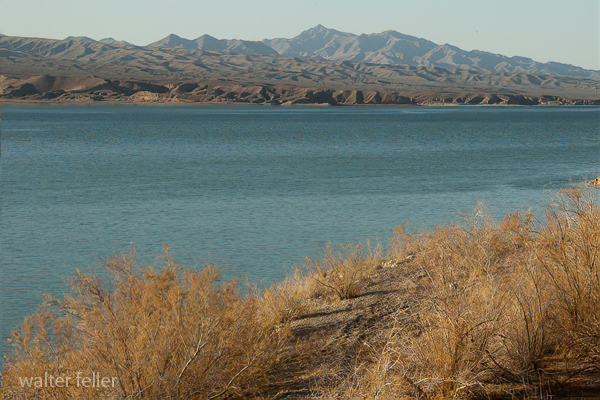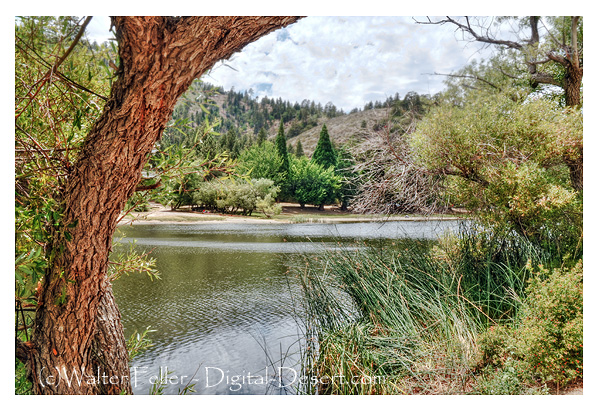Lakes & Wetlands
Lakes in the Mojave Desert and Mountains

Lake Mead
The Mojave Desert is a vast expanse of arid land stretching across parts of California, Nevada, Utah, and Arizona. Known for its harsh climate and unique ecosystem, the Mojave Desert is home to several stunning lakes nestled amidst the rugged mountains.
The Hoover Dam on the Colorado River forms Lake Mead in the Mojave Desert. As the largest reservoir in the United States, Lake Mead offers a vast expanse of water against the backdrop of the surrounding mountains. It attracts numerous visitors who come to enjoy water sports, fishing, and camping.
Heading south, we come across the picturesque Big Bear Lake in the San Bernardino Mountains. Nestled amidst pine trees and surrounded by snow-capped peaks, this alpine lake offers a tranquil escape from the desert heat. Popular activities in Big Bear Lake include boating, kayaking, hiking, and even skiing during the winter months.
Continuing our journey through the Mojave Desert, we stumble upon Lake Havasu on the Colorado River. Known for its crystal-clear waters and stunning sunsets, Lake Havasu is a haven for water enthusiasts. The iconic London Bridge, brought over from England in the 1960s, spans the lake and adds to its charm.
Lastly, we cannot forget about Lake Mohave, another gem located along the Colorado River. Bordering Nevada and Arizona, this lake offers diverse recreational activities, from boating and fishing to swimming and camping. Its picturesque scenery, with cliffs and canyons surrounding the water, makes it a favorite destination for outdoor enthusiasts.
In conclusion, the Mojave Desert and its surrounding mountains are home to several breathtaking lakes, each with its own unique charm and recreational opportunities. Whether you seek tranquility, adventure, or simply an escape from the desert heat, these lakes provide the perfect setting to immerse yourself in nature's beauty. So, next time you find yourself in the Mojave Desert, don't forget to explore these hidden oases and experience the wonders they have to offer.
Geology

Jackson Lake - Angeles National Forest
Geology plays a crucial role in shaping lake and wetlands formation and characteristics. These unique water bodies are important for ecological balance and human activities such as water supply, recreation, and biodiversity conservation. Understanding the geology of lakes and wetlands is essential for proper management and conservation efforts.
Geological processes play a major role in forming lakes and wetlands. One of the key factors is the presence of depressions or basins on the Earth's surface. These depressions can be created through tectonic activity, such as faulting and folding, or through glacial processes. Glacial activity, in particular, has played a significant role in shaping the landscape and forming many lakes and wetlands around the world.
The area's underlying geology also affects the water quality and hydrology of lakes and wetlands. Different rock types have varying abilities to absorb and retain water, which directly impacts the formation and sustainability of these water bodies. For example, areas with porous and permeable rocks like sandstone or limestone tend to have more groundwater-fed lakes and wetlands. Conversely, regions with impermeable rocks, like clay or granite, may have more surface water-fed systems.
Geological processes also influence the water chemistry of lakes and wetlands. The composition of the surrounding rocks can contribute minerals and nutrients to the water, affecting its pH, salinity, and nutrient content. Additionally, geological features, such as faults or fractures, can influence groundwater flow and water movement within these water bodies.
Volcanic activity can also impact the geology of lakes and wetlands. Volcanic eruptions can form crater lakes, which are often characterized by unique geological and ecological features. These lakes are formed when volcanic craters fill with water, creating a distinct environment that supports specialized flora and fauna.
Furthermore, the study of geology can provide important insights into the historical and environmental changes that have occurred in lakes and wetlands over time. By analyzing sediment cores, scientists can reconstruct past climate conditions, identify shifts in vegetation patterns, and uncover evidence of human impacts, such as pollution or land-use changes.
In conclusion, the geology of lakes and wetlands plays a significant role in their formation, characteristics, and ecological dynamics. Understanding the geological processes and features that shape these water bodies is essential for effective management and conservation efforts. By studying the geology of lakes and wetlands, scientists can gain valuable insights into these important ecosystems' history, functioning, and future.
